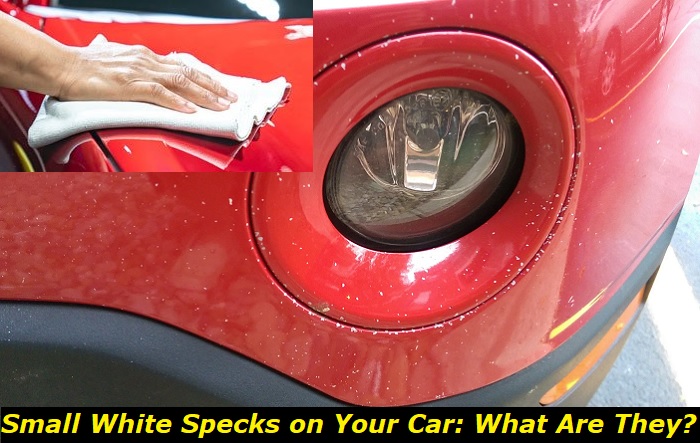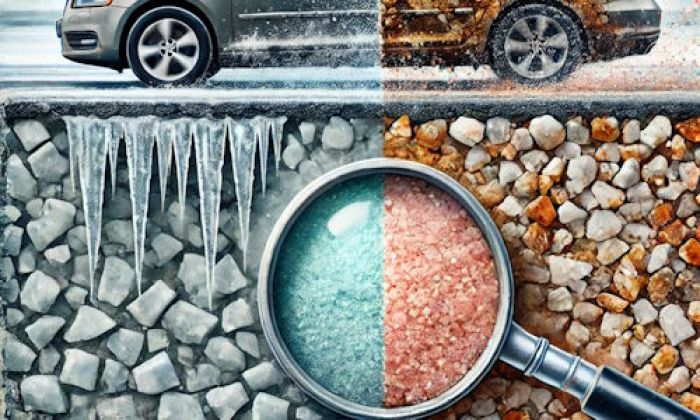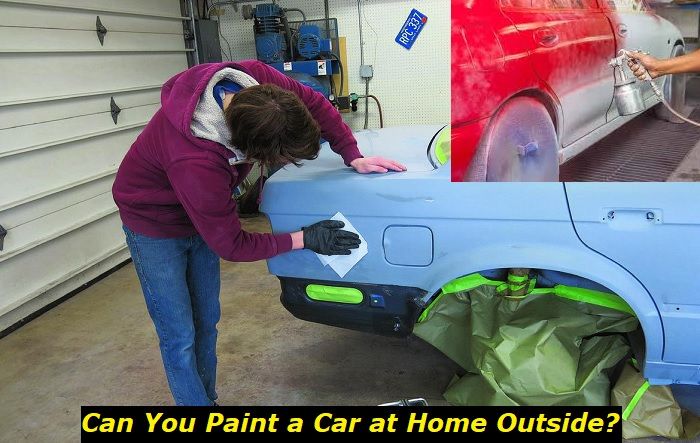Do you notice tiny white specks on some parts of your vehicle? Maybe it's been like that for quite some time, or maybe you just noticed it recently? Whatever the case, we are here to help you out!
Mainly, any particle that does not belong in the paint mixture is viewed as an impurity, even more so if it's visible from a distance. Foreign matter in the paint can appear for many different reasons.
It might be present in the paint itself even before you layer it down. These contaminants can usually be nailed down to dirt, pigment agglomerates, or gel particles.

The impurities can be eliminated with the use of paint filtering and by using in-line filters in the painting equipment.
The best thing that you can do is to check and determine the exact composition of the white spots that you noticed on the vehicle. This will help to narrow down the correct solution and resolve the problem.
Moving on, in this article, we will be talking about some causes of white speck appearance and how to deal with them so stick with us!
Where do the White Specks Come From?
Considering that the paint was not contaminated beforehand and that you only recently started seeing those annoying tiny white specks on your vehicle, we might have a few solutions for you.
Mainly, the tiny white specks can appear on the paint or glass of your vehicle everywhere that water comes in contact with the paint. Basically, this water can be a product of rain, water puddle, car wash, or even you spilling that refreshing cold drink on a hot summer day - it can come from anywhere.
On top of everything, some of that water that gets in contact with the paint is unfiltered and contains many mineral compounds as well as salts. You can guess how this affects your car's paint. Also, it's important to note that natural evaporation also leaves behind damage on the paint in form of corrosives.
How do White Specks Form?
As we've explained above, the tiny white specks that you notice on your car paint most often than not come from any form of water that the paint is being exposed to.
Mainly, the water that has not been filtered, meaning that it still has minerals: salts, dirt, etc. leaves those compounds and corrosives behind when it's left to dry on the paint.
Slowly but surely this water evaporation will create little crates on the paint where the compounds had dried.
Over time, the new unfiltered water will follow this course and end up in previously created craters which will make them bigger and bigger. If the problem is left unattended for long periods of time it can cause permanent paint damage, also known as etching.
Cleaning the White Specks
To start off, the easiest way in which you can get rid of the tiny white specks is to simply clean off the water spots as quickly as you can.
You can use some cleaning spray to wipe the specks off. It's important to note, that while this is the easiest way it also requires you to wipe the water off the paint before it has had the time to dry.
This can be bothersome for example when the temperatures outside are really high and it doesn't take very long for the water to evaporate.
Eventually, if not cleaned straight away, the specks will permanently damage the paint and the only way in which you will be able to remove them is with good old sandpaper.
While there are many ways in which you can get rid of the white specks, which we will mention later, it's always best practice to avoid getting your vehicle wet for no reason.
For example, you should always park your vehicle in your garage if you have one. Another good tip is to avoid sprinklers and parking anywhere near them.
Also, there are products that you can buy and apply over your vehicle's paint layer so that it creates sort of a barrier between the water and paint. These products inevitably save the paint and provide the needed protection. They are totally worth checking out!
Is the car paint damaged?
While many people want to know the answer straight away, it's difficult to say. There are many factors on which this depends.
Mainly, it has to do with how long has the speck been there, what are the temperatures outside, does the vehicle have any protection, or how much mineral content is inside the specks.
All of these questions are hard to answer as you might imagine but, in most cases, unless the process of evaporation and drying off has been repeated too many times, the paint is not damaged.
So as we've mentioned above the faster you clean the tiny white specks the better because if left unattended for long they will eat away at the clear coat of paint.
Removing the White Specks
If you've determined that your vehicle has some white spots that are not as easily removed with a cleaning spray or a simple soap and bucket wash, we will provide you with some tips which just might be the solution to the problem!
Assuming that you have already tried the traditional cleaning method and left your car to dry off after which the white spots were still present, you might want to get more serious.
One good trick that people tend to use is white vinegar. Mainly, you should create a mixture of white vinegar and distilled water. Why use vinegar? Well, basically, vinegar destroys the mineral components that are present in the specks and helps clean them more efficiently.
The first step would be to apply some amount of the mixture that you made with vinegar onto some cloth and rub it in on the spots until you see them fade away.
The mixture will most likely clean the specks after which you should wash the area where you applied the vinegar mixture in order to wipe everything clean and dry it off.
If the simple good old wash didn't go as planned the vinegar and distilled water mixture will usually do the trick.
If the vinegar mixture didn't yield any results you might need to get yourself a clay bar. First, you should want to wet the paint after which you can use the clay bar and glide it across the white specks so that the clay could pick up mineral deposits. This is also a neat trick but sometimes it might not be enough.
Another thing you can try doing if everything mentioned above fails is to get a polisher.
For best results, you should use a cutting pad and a compound, do a few passes and try to see if it helped. If you think that you might be onto something just finish the whole polish and the vehicle will look as good as new!
The last resort that we have to offer is the good old sanding paper. It will most definitely damage the paint but you can minimize that by starting with a light grade and not applying as much pressure.
It's always important to keep the paint wet while you are sanding it. Every once in a while you should check if there is any improvement. If the spots are gone, that's it, you've done it!
The last thing would be to get the above-mentioned cutting pad and compound and polish the whole thing. Also, it goes without saying that if needed you should do a paint correction after all that sanding.
It's also very important that you apply some products for paint protection after you've gone through this process.
If those white specks are the primer
In worst cases, tiny white specs my just be the primer that you can see through your paint. This means that the layers of paint have completely worn out and now you will need to repaint this part of your car. It often happens on the parts that are prone to damage like the parts around wheels, lower part of your doors, etc.
In this case, cleaning those white specs is close to impossible. So, the best solution is to have your car repainted, at least in those spots where you have located the white specs.
Conclusion
In today's article, we've explained what those tiny white specks on your car are and how to get rid of them. In summary, the specks are made of the minerals that are left by the evaporation of water anywhere near the paint.
We've covered many different ways how to remove the spots, some of which were as simple as just cleaning the spot as soon as you see it, to some more difficult and robust ways which included the use of tools.
We hope that we've helped you understand where and how the specks form as well as what to do in each situation. It goes without saying that the best thing you can do is to use paint protection products on your vehicle and always clean the spots as soon as you see them form.
You should always be prepared for these kinds of problems because they are simple to fix but can get really messy if left unattended for a long time.
Keep your vehicle healthy and unspotted!
About the authors
The CarAraC research team is composed of seasoned auto mechanics and automotive industry professionals, including individuals with advanced degrees and certifications in their field. Our team members boast prestigious credentials, reflecting their extensive knowledge and skills. These qualifications include: IMI: Institute of the Motor Industry, ASE-Certified Master Automobile Technicians; Coventry University, Graduate of MA in Automotive Journalism; Politecnico di Torino, Italy, MS Automotive Engineering; Ss. Cyril and Methodius University in Skopje, Mechanical University in Skopje; TOC Automotive College; DHA Suffa University, Department of Mechanical Engineering






Add comment